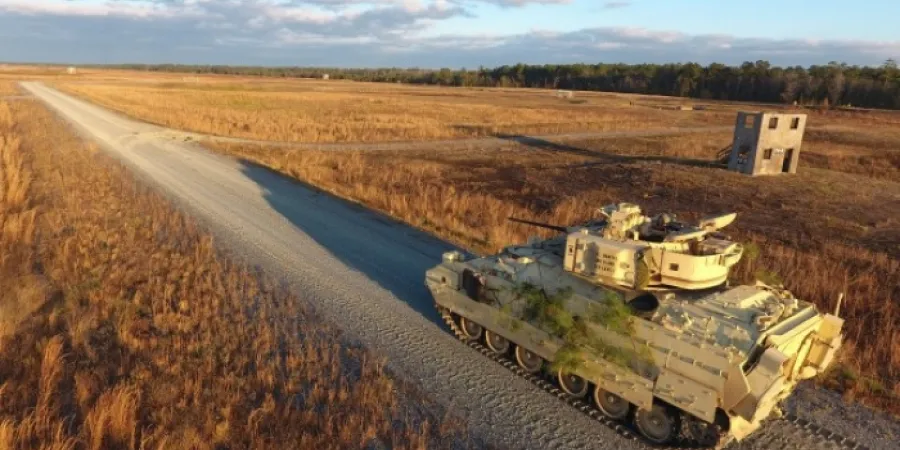U.S. Army developing future combat vehicles to ensure advantage over threats
These vehicles, encompassing a family of new manned and unmanned platforms, will have advanced capabilities to ensure continued overmatch against adversaries for decades
Eyal Boguslavsky
| 04/08/2020
The U.S. Army is developing a new family of combat vehicles that will cover a spectrum of autonomy and robotics to prepare for the future battlefield. According to the Defense Blog website, these vehicles, encompassing a family of new manned and unmanned platforms, will have advanced capabilities to ensure continued overmatch against adversaries for decades and beyond.
The U.S. Army Combat Capabilities Development Command released new images showing the concept of future combat vehicles. The website claims that the new family of combat vehicles will keep with the junction of instability and disruptive technology that will erode the Army’s post-Cold War comparative advantage.
The future platforms will have Terminator-like capabilities which are enabled by assured position, navigation and timing and resilient networks that will enable future maneuver formations to execute semi-independent operations while conducting cross-domain maneuver against a peer adversary.
Operating within Next Generation Combat Vehicle (NGCV) concept, the Army is working to increase the survivability and lethality of the combat platform. In future close combat formations, units equipped with NGCV must maneuver effectively in unrestricted, restricted, and dense urban terrain. The manned and robotics vehicles will be designed to maneuver soldiers in the future operating environment to a position of advantage to engage in close combat and deliver decisive lethality during the execution of combined arms maneuver. NGCV must exceed current capabilities while overmatching similar threat class systems.
Defense-blog.com estimates that it is expected that new robotics technology will help soldiers in two ways: It eliminates the need for soldiers to conduct mundane, dangerous or repetitive tasks that can be automated, and it increases the standoff distance between soldiers and a threat, which can greatly enhance safety. Additionally, automation can increase logistics on convoy missions. For example, a pair of soldiers can operate a convoy that normally requires two soldiers in each vehicle, freeing the additional soldiers to conduct other missions, such as providing security for the convoy.
The new generation of combat vehicles is intended to replace the Bradley starting in 2026 and is designed to better operate in future environments that would allow soldiers to maneuver to a position of advantage and to engage in close combat and deliver decisive lethality during the execution of combined arms maneuvers.
These vehicles, encompassing a family of new manned and unmanned platforms, will have advanced capabilities to ensure continued overmatch against adversaries for decades
The U.S. Army is developing a new family of combat vehicles that will cover a spectrum of autonomy and robotics to prepare for the future battlefield. According to the Defense Blog website, these vehicles, encompassing a family of new manned and unmanned platforms, will have advanced capabilities to ensure continued overmatch against adversaries for decades and beyond.
The U.S. Army Combat Capabilities Development Command released new images showing the concept of future combat vehicles. The website claims that the new family of combat vehicles will keep with the junction of instability and disruptive technology that will erode the Army’s post-Cold War comparative advantage.
The future platforms will have Terminator-like capabilities which are enabled by assured position, navigation and timing and resilient networks that will enable future maneuver formations to execute semi-independent operations while conducting cross-domain maneuver against a peer adversary.
Operating within Next Generation Combat Vehicle (NGCV) concept, the Army is working to increase the survivability and lethality of the combat platform. In future close combat formations, units equipped with NGCV must maneuver effectively in unrestricted, restricted, and dense urban terrain. The manned and robotics vehicles will be designed to maneuver soldiers in the future operating environment to a position of advantage to engage in close combat and deliver decisive lethality during the execution of combined arms maneuver. NGCV must exceed current capabilities while overmatching similar threat class systems.
Defense-blog.com estimates that it is expected that new robotics technology will help soldiers in two ways: It eliminates the need for soldiers to conduct mundane, dangerous or repetitive tasks that can be automated, and it increases the standoff distance between soldiers and a threat, which can greatly enhance safety. Additionally, automation can increase logistics on convoy missions. For example, a pair of soldiers can operate a convoy that normally requires two soldiers in each vehicle, freeing the additional soldiers to conduct other missions, such as providing security for the convoy.
The new generation of combat vehicles is intended to replace the Bradley starting in 2026 and is designed to better operate in future environments that would allow soldiers to maneuver to a position of advantage and to engage in close combat and deliver decisive lethality during the execution of combined arms maneuvers.



